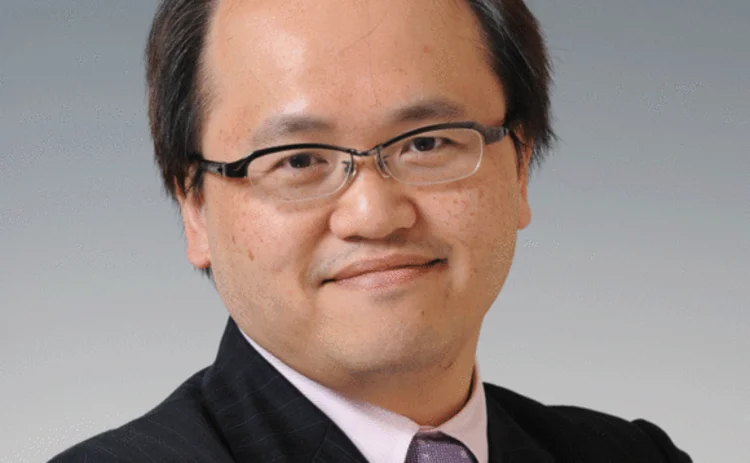
Best in Japan: Société Générale

An unwavering commitment to structured products based on any asset class and innovations in the institutional market lie at the heart of Société Générale's success in Japan. According to its own calculations, the bank had structured around 13% of deals in Japan's public offer market as of May 23, making it the second biggest structurer in the market. In 2011, the bank was third placed, with a near 10% share.
The more tailored private placement market was lit up by the French bank's Leveraged Nikkei-linked Equity Ball, while institutional investors continued to benefit from SG's development of the distinctly innovative variable annuity products. With deal technology imported from SG's Americas structured products team, the bank's variable annuity product has been rolled out in Europe over the past year.
The bank estimates it has a 30% share of new variable annuity volumes in Japan from a core team that is four-strong there, with nine employees in Hong Kong. Overall, it boasts 290 employees in Japan, of which 100 are front office, with 25 structured products sales, structuring and marketing personnel. The trading team sits in Hong Kong.
The bank issues roughly 10% of the structured notes it offers to investors, with most of the rest issued by third-party, triple A rated institutions that tend to be sovereign or quasi-sovereign. The large amount of issuance from third parties puts SG into competition with other derivatives providers in Japan. "With competitive bidding, we need to be quick," says Hideaki Takahashi, head of distribution, institutional and servicing solutions group Japan at SG in Tokyo. "A five- or 10-minute delay is usually a problem for the client."
The notional market is big, but it remains difficult to hedge the larger deals of between €150 million-250 million equivalent, says Takahashi, adding that the skill and ability of traders cannot be underestimated.
In equity derivatives in 2011, SG reckons it has a 22% share of the structured notes public offering market, having placed €700 million in the first five months of the year. "We use this expertise in structuring products based on foreign exchange and rates, which is a strength when you compare us to our competitors," says Takahashi. It has also worked the other way round, with the bank adapting issuer callability - a widespread feature of the rates market - for its equity products. "Such a feature would indeed make clients sell equity volatility, when it was at a historical high," he says.
The bank's private placement issuance was led by a hybrid product of the Nikkei and forex, the Equity Ball Nikkei Double Leveraged Note. "We can do this at a better price than our competitors because there is no conflict between the equity and the forex trader." The product resembles a single-stock exchangeable bond. "During the crisis, investors lost money on forex investments, so they do not want to go into it again." The answer was to create a product for those investors who had lost money.
The Equity Ball offers investors the chance of receiving high forex rates when early redemption occurs, and has been distributed mainly by Nikko Securities and Matsui Securities. As the volatility of the Nikkei is usually lower than stocks, the product offers higher, double leveraged Nikkei forex rates to investors while they take a risk on the benchmark index. It is tailored to suit investors who want to earn back their losses in forex while taking equity risk. "We looked at a product where, if the Nikkei stays the same, investors can get a return," says Takahashi. "Our unique trading abilities enabled us to structure the hybrid product as a solution."
Since 2010, the variable annuity market in Japan has been worth around €5 billion per annum. After the Lehman Brothers collapse, many insurance companies stopped selling variable annuities, with the revival starting in 2010.
"We had quite a decent share of this market in 2010," he says. In 2011, SG sold €80-90 million of its variable annuity product, he adds. The product follows a momentum strategy, which determines the exposure at any time between the equity and fixed-income markets, and makes use of the in-house trading and asset management skills and Catalyst Re, a fully fledged in-house reinsurer.
The investment scheme matches private placement funding with a full exposure to a strategic index between the launch date and the indexing date, offered by means of a total return swap with SG. The insurance company provides a variable annuity wrapper on a Lyxor fund that tracks the Société Générale Indexes custom index, with investors paying a 2.95% fee and getting a 100% guarantee on their investment, which kicks in if they die. SG includes a volatility control mechanism in the index.
The bank has designed new variable annuity products with three large insurance companies in Japan. "For our variable annuity business, SG is providing us with innovative product from both an investment and a risk management point of view," says the group manager in product development at a Tokyo-based Japanese insurer.
Only users who have a paid subscription or are part of a corporate subscription are able to print or copy content.
To access these options, along with all other subscription benefits, please contact info@risk.net or view our subscription options here: http://subscriptions.risk.net/subscribe
You are currently unable to print this content. Please contact info@risk.net to find out more.
You are currently unable to copy this content. Please contact info@risk.net to find out more.
Copyright Infopro Digital Limited. All rights reserved.
As outlined in our terms and conditions, https://www.infopro-digital.com/terms-and-conditions/subscriptions/ (point 2.4), printing is limited to a single copy.
If you would like to purchase additional rights please email info@risk.net
Copyright Infopro Digital Limited. All rights reserved.
You may share this content using our article tools. As outlined in our terms and conditions, https://www.infopro-digital.com/terms-and-conditions/subscriptions/ (clause 2.4), an Authorised User may only make one copy of the materials for their own personal use. You must also comply with the restrictions in clause 2.5.
If you would like to purchase additional rights please email info@risk.net
More on Awards
Collateral management and optimisation product of the year: CloudMargin
Delivering the modern blueprint for enterprise collateral resilience
Flow market-maker of the year: Citadel Securities
Risk Awards 2026: No financing; no long-dated swaps? “No distractions,” says Esposito
Pricing and analytics: fixed income – Quantifi
Quantifi delivers high-performance, transparent and adaptable pricing and risk analytics for fixed income and credit markets
Derivatives house of the year: Citi
Risk Awards 2026: Rev up, RWAs down, as US bank gets back on track (with added XiNG and XiP)
Technology vendor of the year: SS&C Algorithmics
Risk Awards 2026: From cloud, to chips, to maths tricks – vendor getting more out of existing tech
SS&C Algorithmics: winner’s interview with Curt Burmeister
SS&C Algorithmics wins three categories in this year’s Markets Technology Awards in addition to Technology vendor of the year at the Risk Awards
Best vendor for system support and implementation: Murex
Murex wins Best vendor for system support and implementation at the Markets Technology Awards 2026
Pricing and analytics: cross-asset and structured – Murex
Murex wins Pricing and analytics: cross-asset and structured at the Markets Technology Awards 2026 thanks to its MX.3 platform







